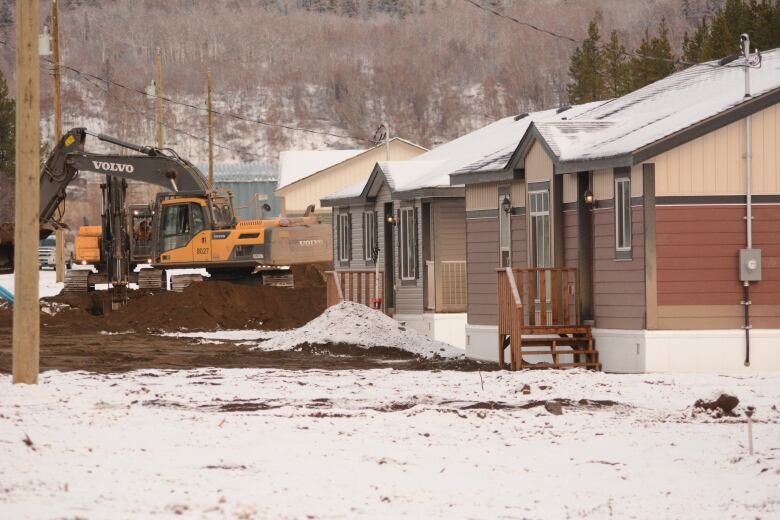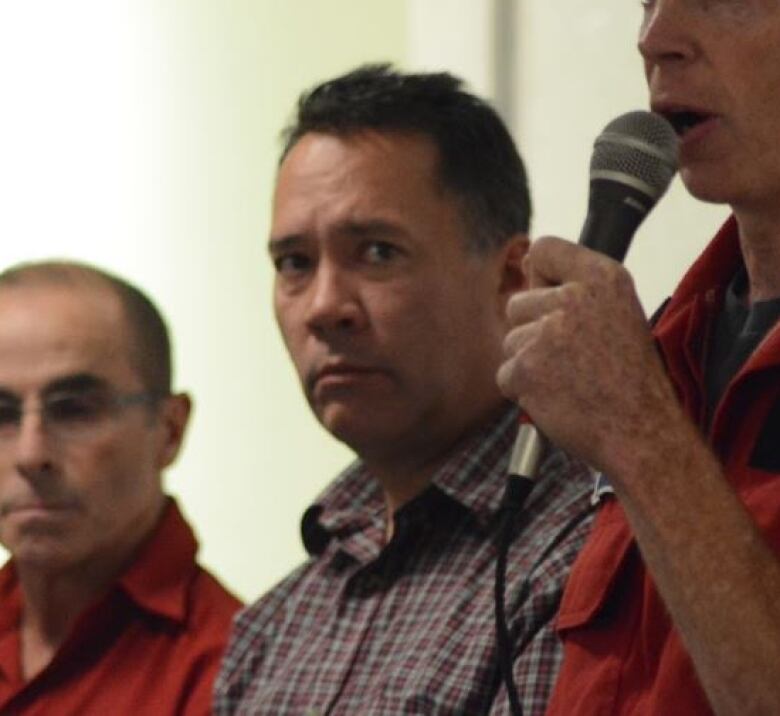Wildfire emerges from hibernation near Telegraph Creek, B.C.
Devastating Alkali Lake fire continued to smoulder underground through the winter, officials say

Last year's devastating wildfirein and around Telegraph Creek, B.C. wasnever fully extinguished and firefighters are now back in the area, dealing with itsre-emergence in spots.
Carolyn Bartos, a fire information officer with B.C.'s Wildfire Service, describes these "holdover" fires as being under control, with no threat of spreading.
"An over-wintering fire occurs when a wildfire that burns deep into the ground continues to smoulder all winter," shesaid.
"So, kind of like picturing your woodstove that's dampered really, really low, and once it gets presented with the right weather conditions, it can re-emerge and that's what we are seeing here."
The Alkali Lake wildfire burned for months last year, resulting in a102-day evacuation order in Telegraph Creek that wasn't lifted until November. The fire destroyed more than 20 homes and dozens of other structures in and around the community,including the daycare and a residence for nurses.

Bartos says there are now five small holdover fires burning in the area, with the closest about fourkilometres southofTelegraph Creek.
"It is reported from a homeowner, who says she's kind of intermittently seen this fire smoke throughout the winter. It's not a forest fire per se, but there was heat detected with the infrared scanner," she said.
Wildfire crews typically do aerial scans of areas that have been affected by large wildfires, looking for any "potential hotspots," according to Bartos.
"These scans will keep happening, there will be overview flights continuously happening," she said.
'Everybody's on high alert'
Nine firefighters have been stationed in nearby Dease Lake since last week, dealing with the reported holdover fires.
TahltanBand Council Chief Rick McLeansaysthe area has seen holdover fires before, but the conditions seem more conducive to them now.

"The water table is lower and lower and it's allowing the fires to smoulder in those peat bogs all winter," he said.
McLean saidpeople in Telegraph Creek are bracing for another potentially bad summer.
"We're looking at another really dry season, so everybody's on high alert and anxieties are high, and we're very cautious and worried," he said from Burns Lake, B.C., where he was speaking ata conference on wildfire resilience.
McLean said he urged other communities at the conference this week to ensure they have emergency plans in place, and that residentsare ready for anyevacuation.
"Prepare, prepare, prepare," he said.
With files from Philippe Morin












_(720p).jpg)


 OFFICIAL HD MUSIC VIDEO.jpg)
.jpg)



























































































